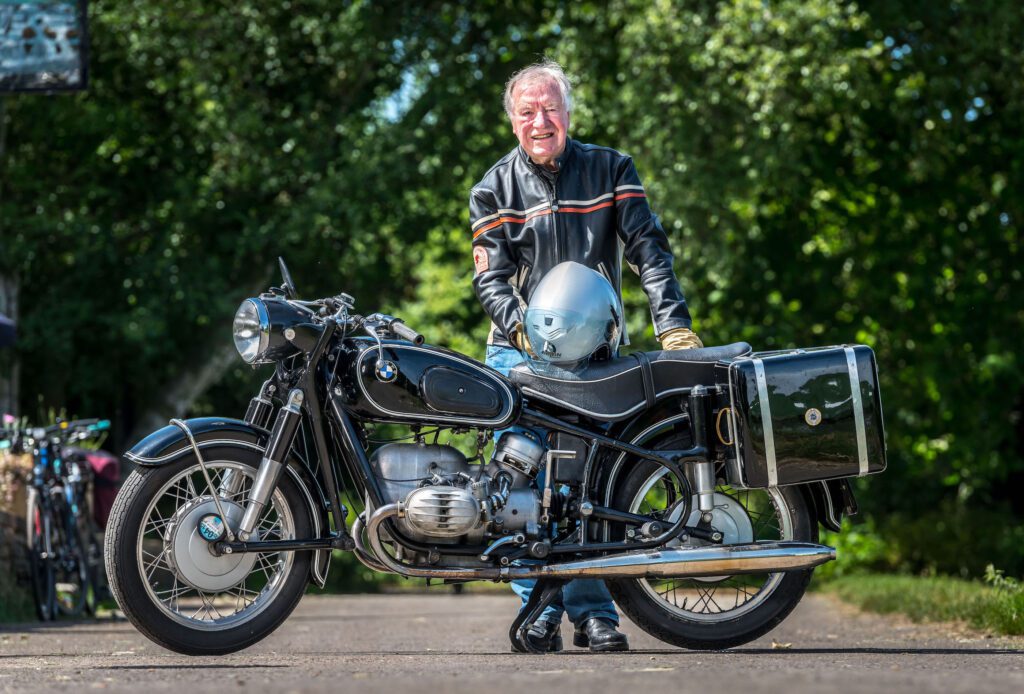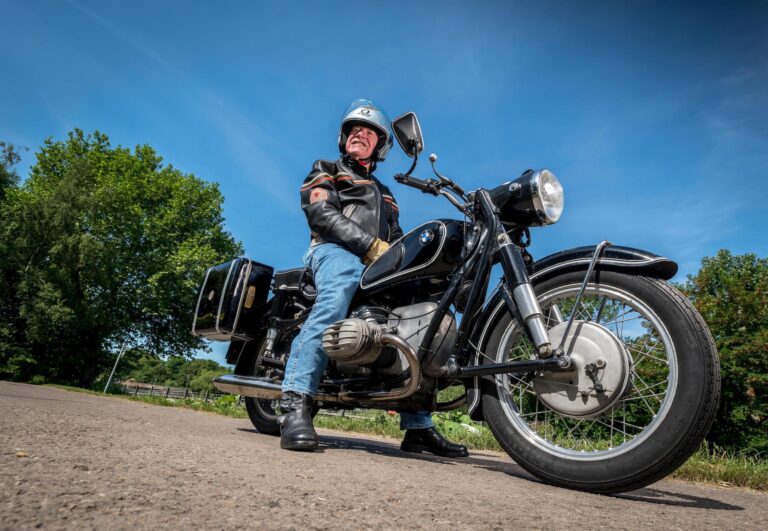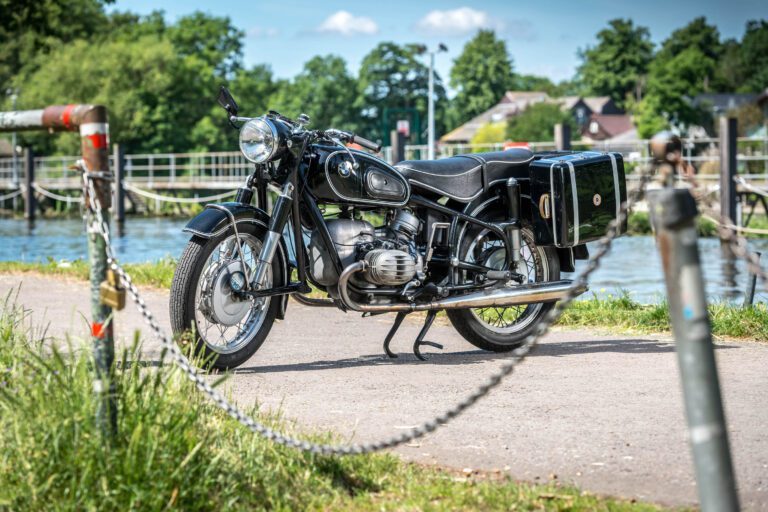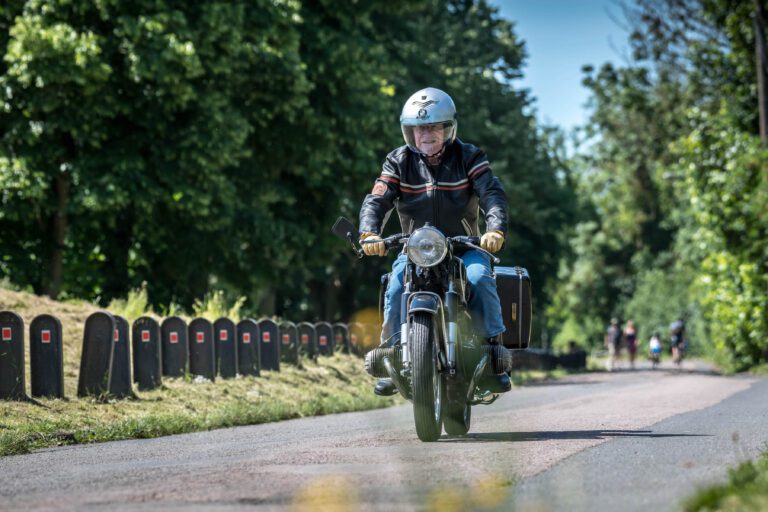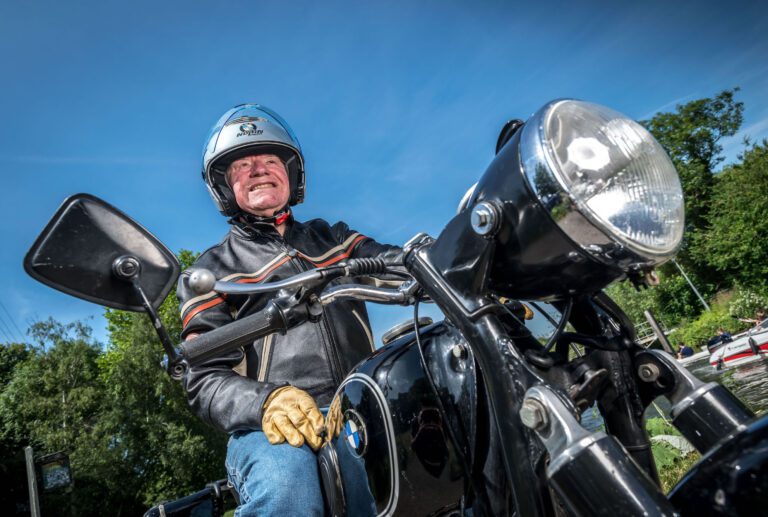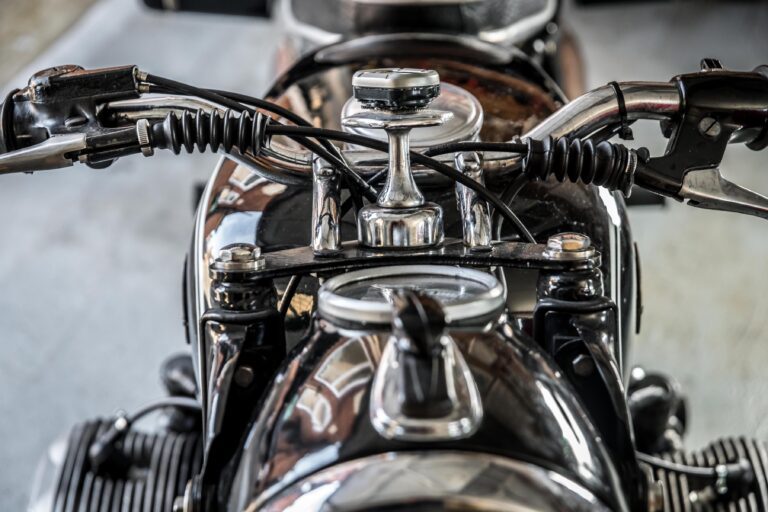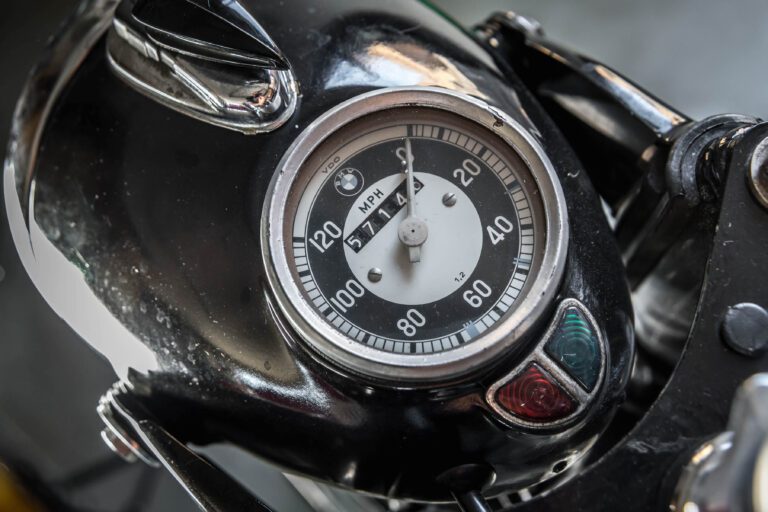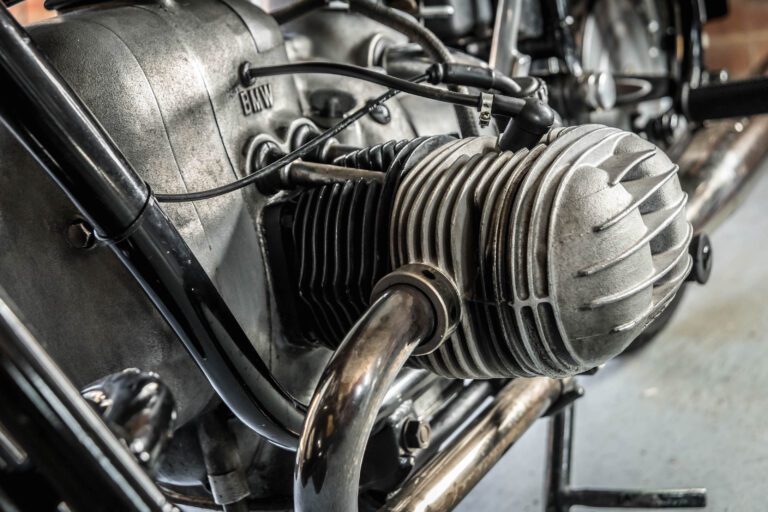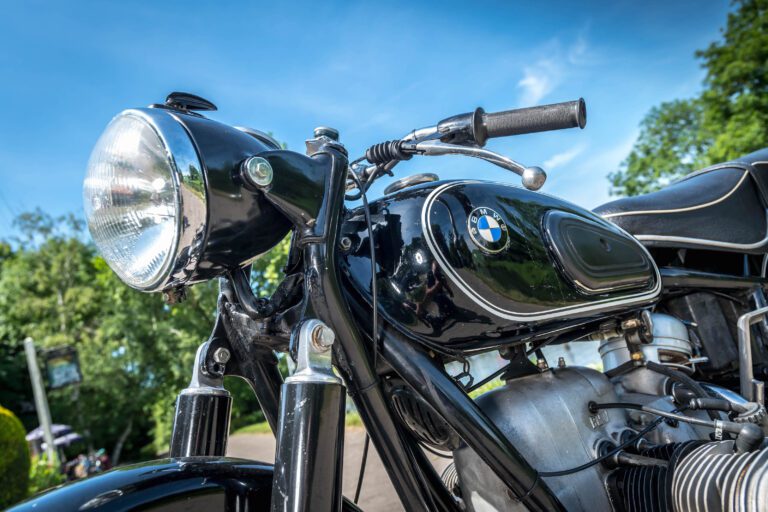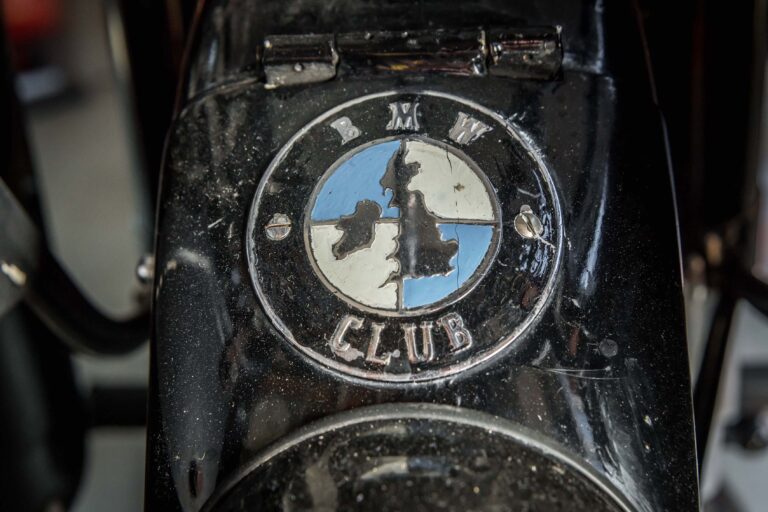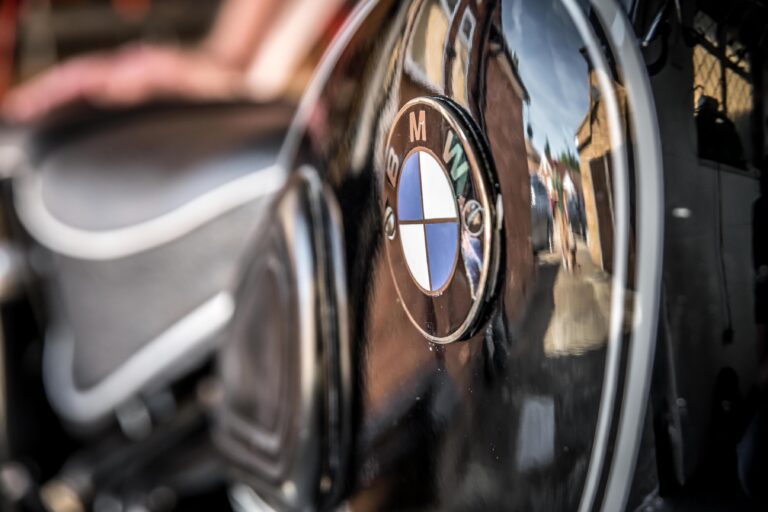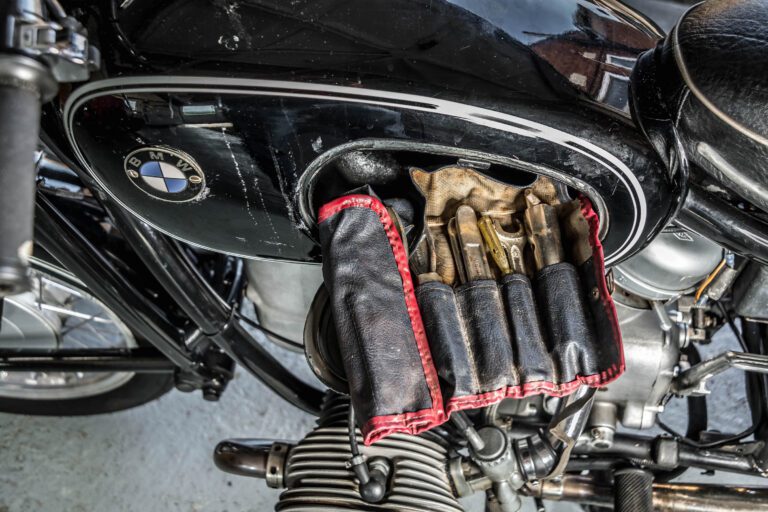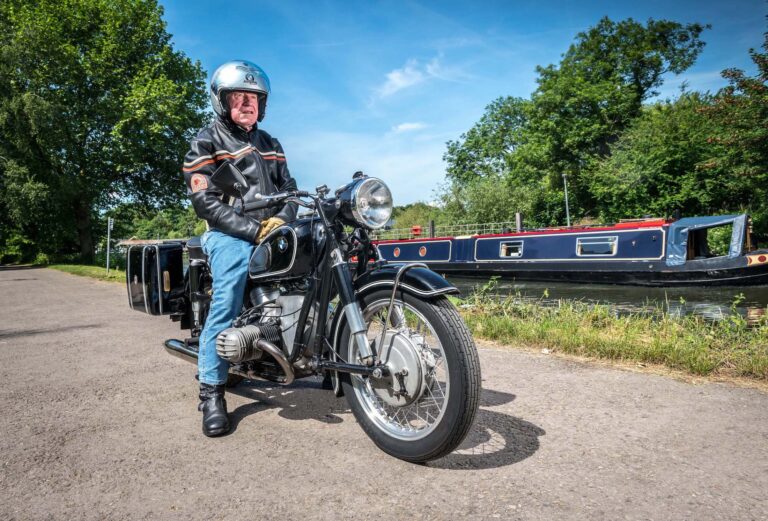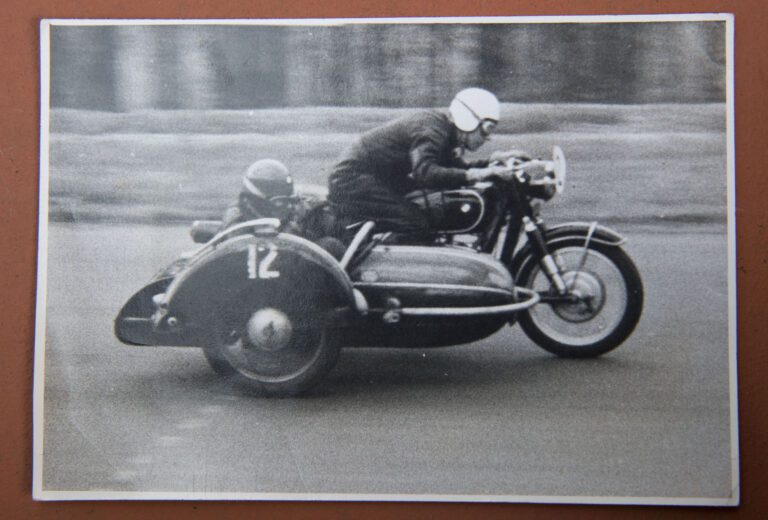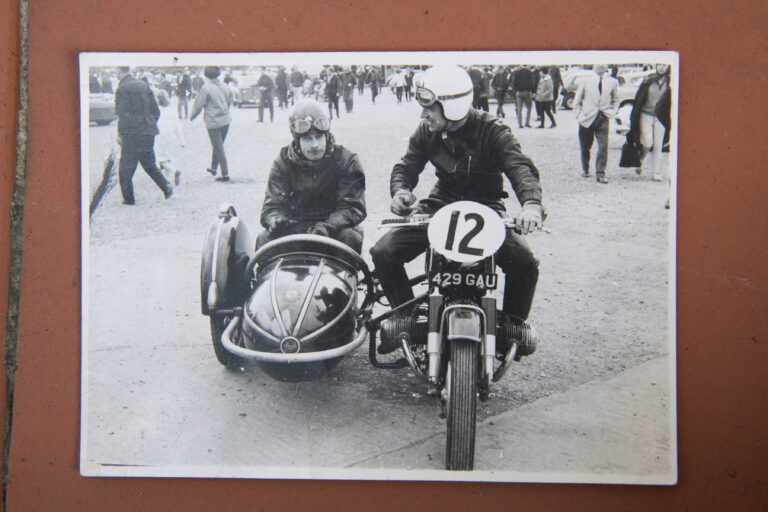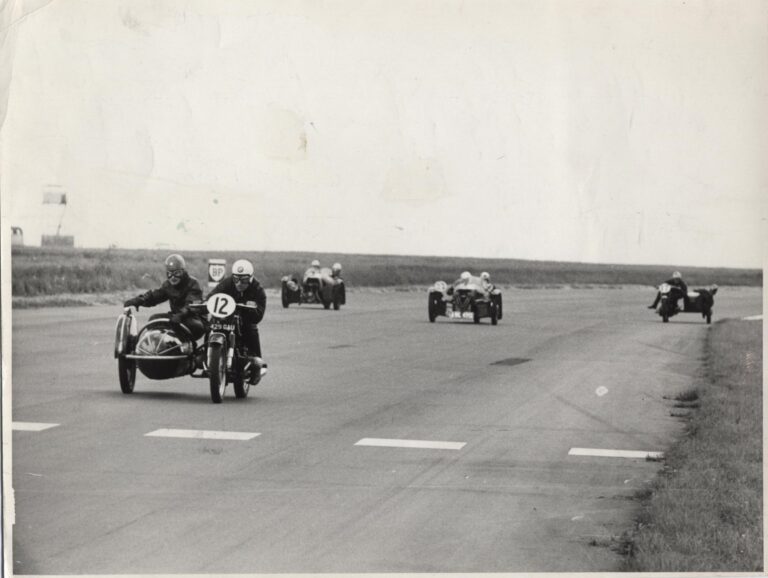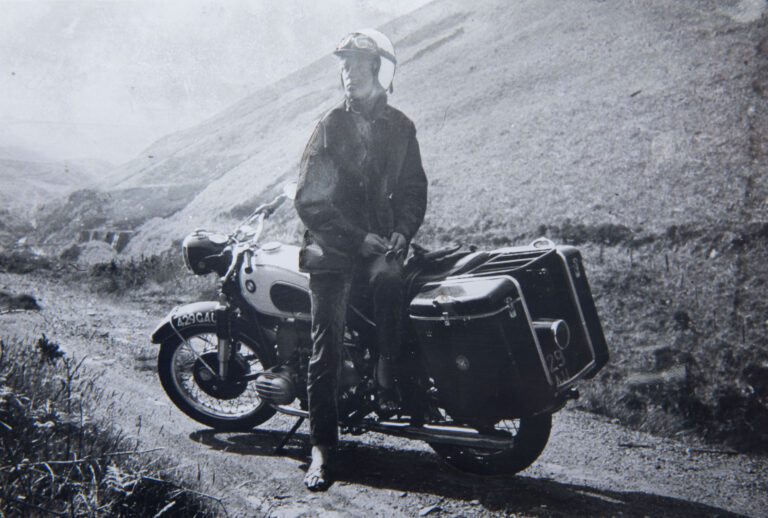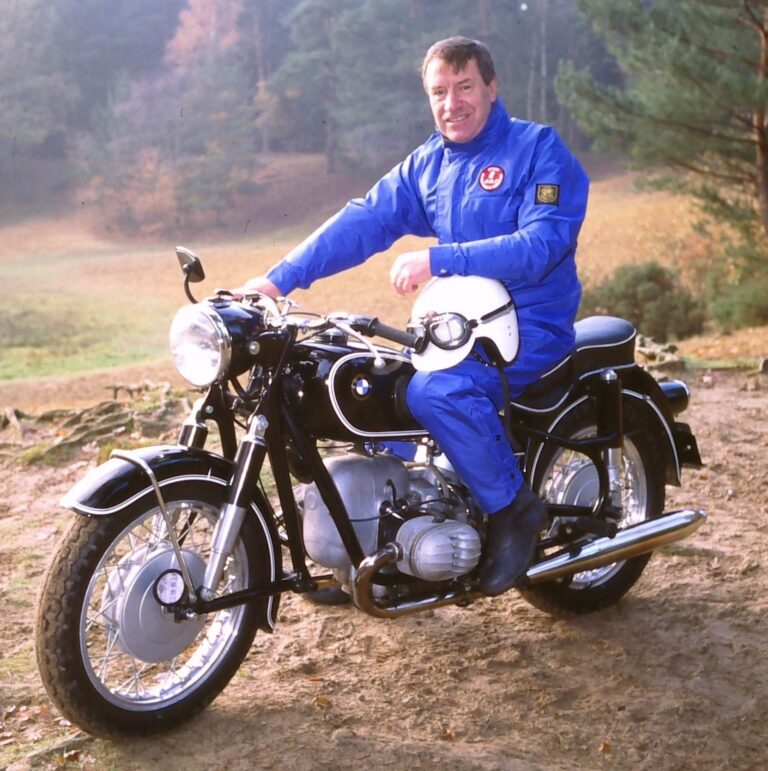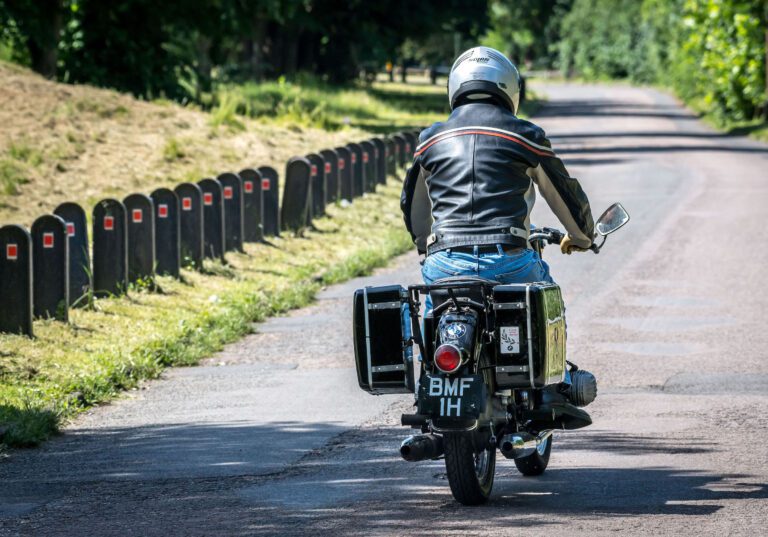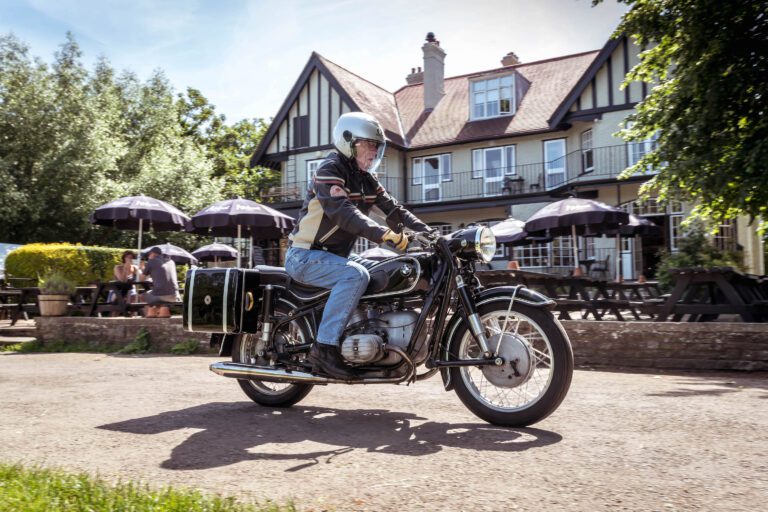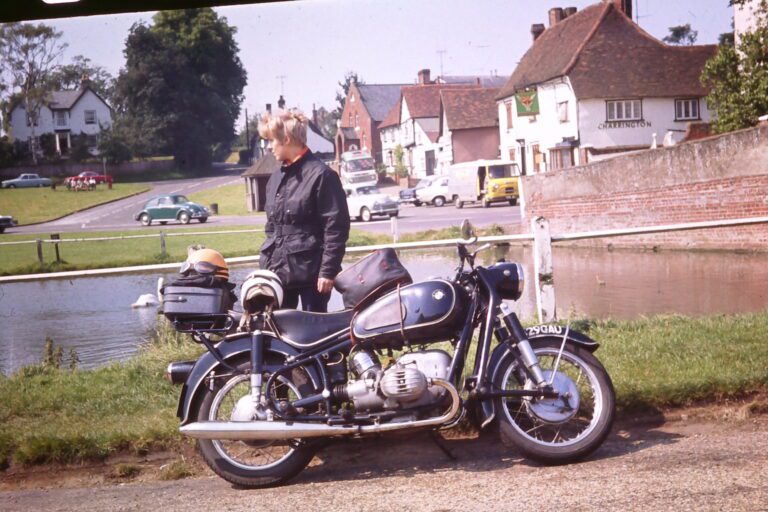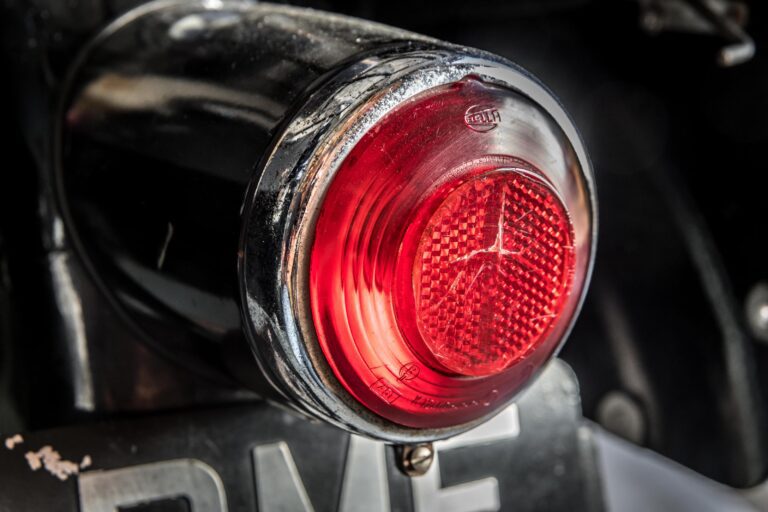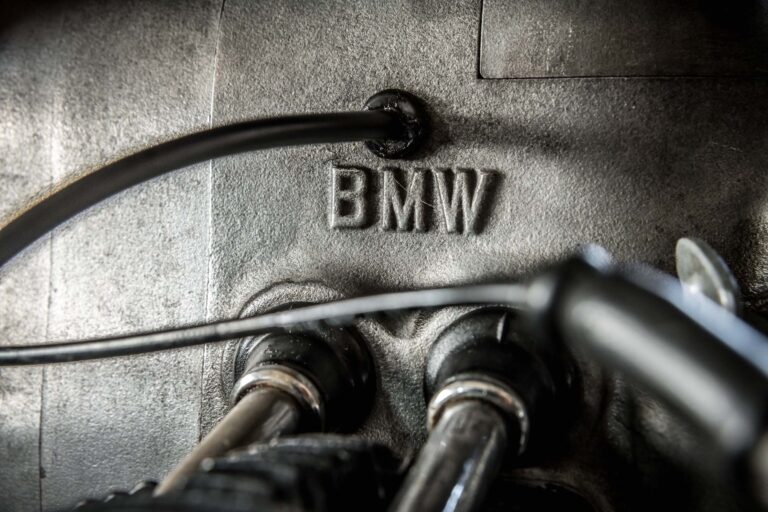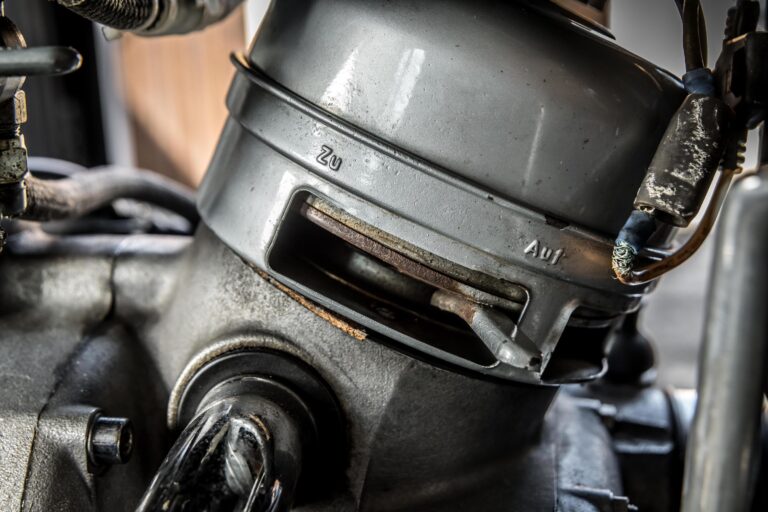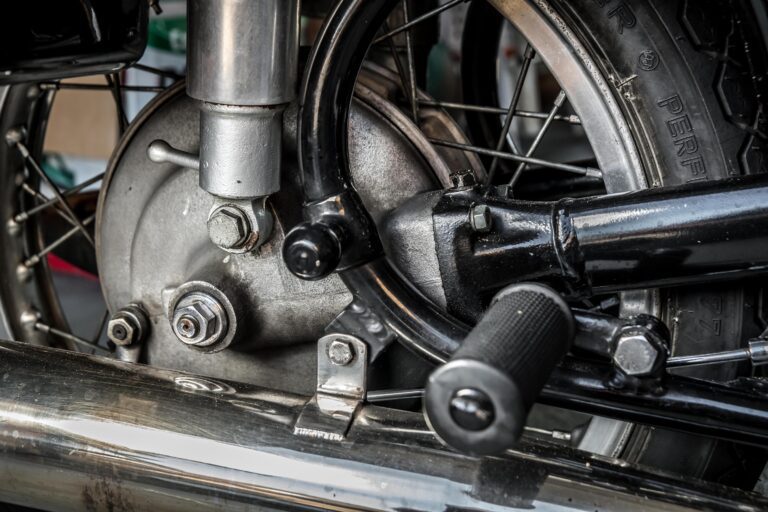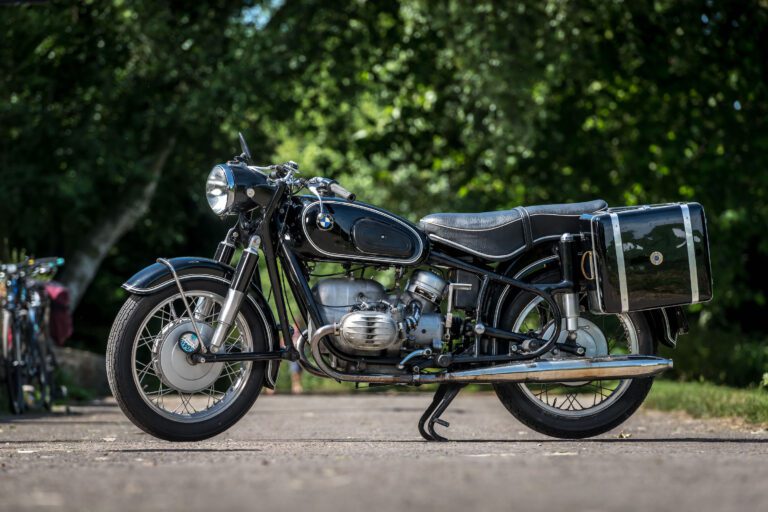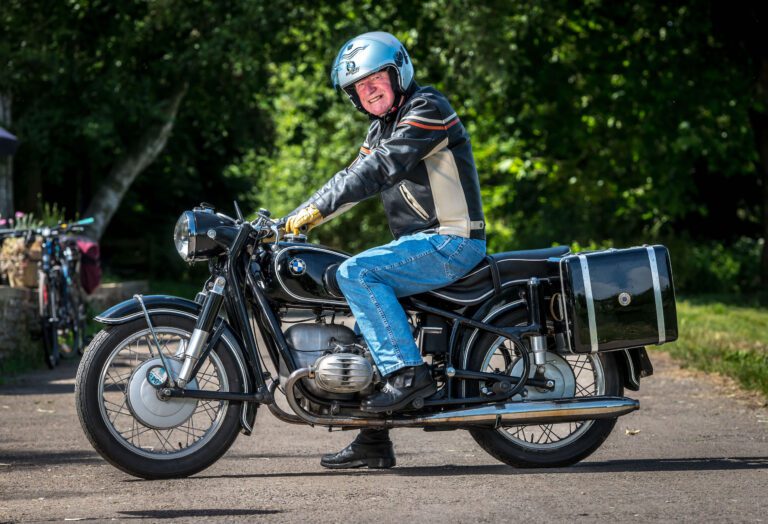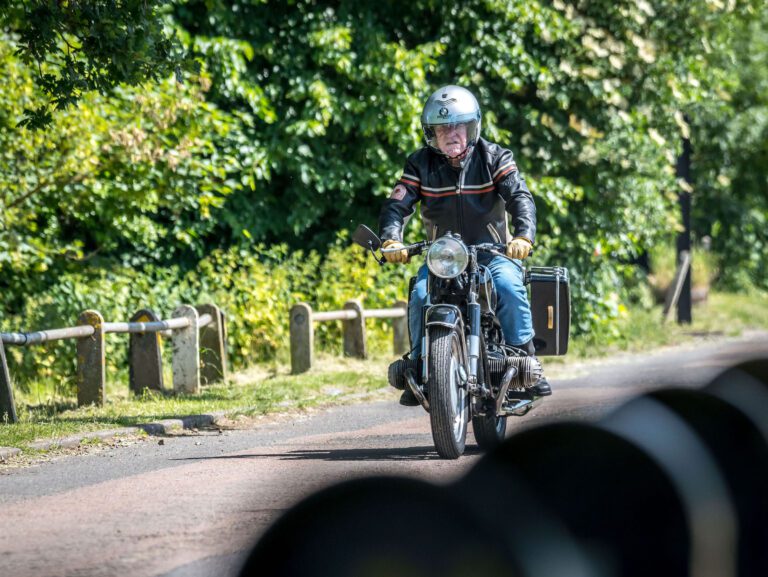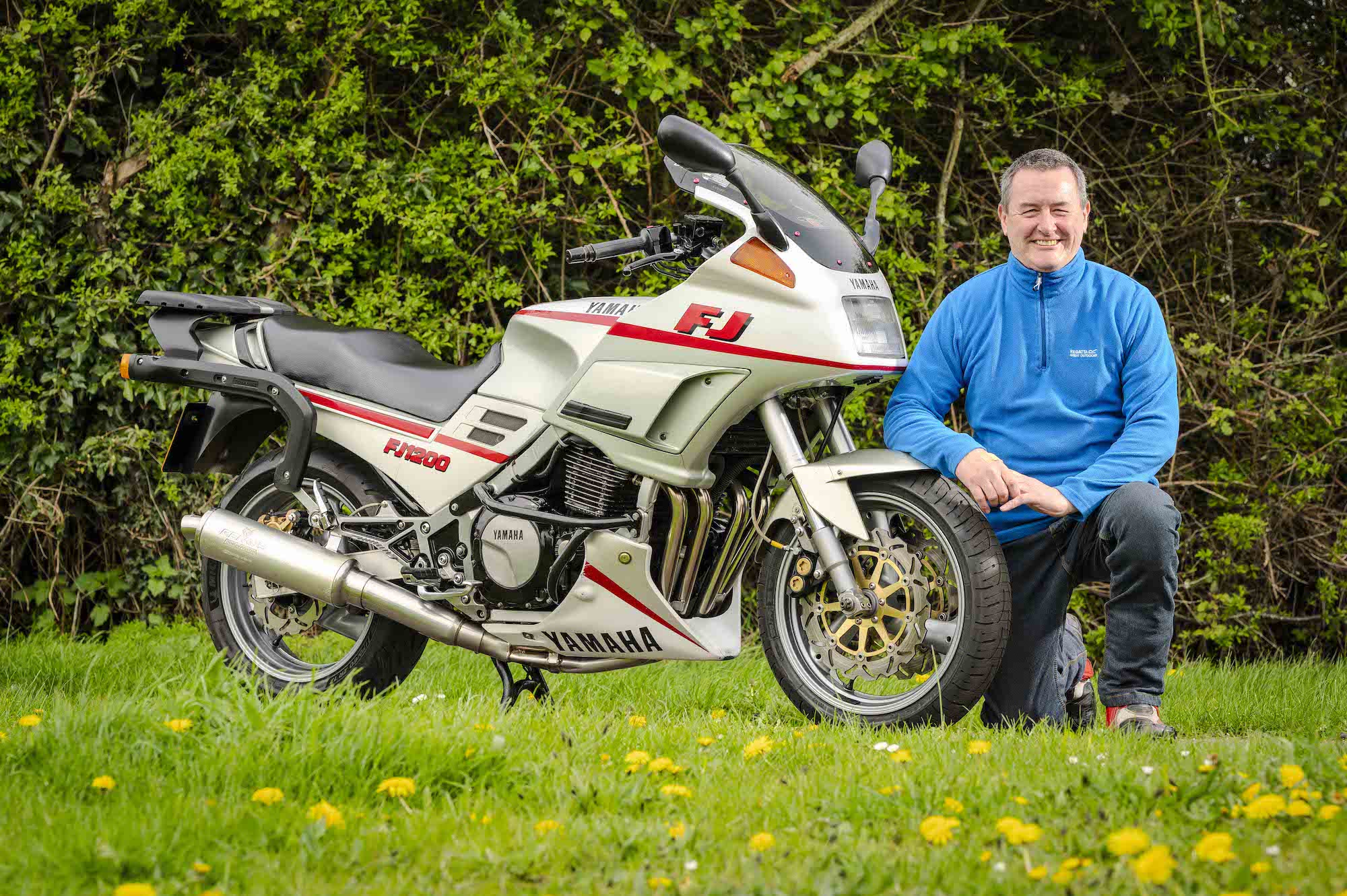Motorcycling journalist and author Bruce Preston has owned his BMW R60/2 since 1964 and, now in his 80s, still rides it regularly.
Over many years as a road tester for Motorcycle Sport magazine, it became his benchmark, the bike by which all others should be measured.
Here, in his own words, he takes us through a motorcycling life well-lived, from buying his first bike, a BSA Bantam in 1951, via competing in motorsport, to his global travels as a biker tour guide.
My first motorcycle was a BSA Bantam D1. In those days (1951) a good percentage of first time motorcyclists chose the Bantam.
It was (I hoped!) reliable, economical and just about affordable. Touring motorcycling hadn’t yet entered my mind. I had just been indentured as an apprentice camera operator and my employer paid me another five shillings a week as I was now having to travel from Hammersmith to Esher.
The bus journey took an hour and a quarter, and it didn’t take me long to figure out that if I bought a small motorcycle, encouraged by my fellow apprentices, I could make the journey in 30 minutes.
“Hooked for life”
Motorcycling was very popular in 1951 and the prime requirement was getting to work. When you are 16 and want to see more of the world, what could be a better way of doing it? I was hooked for life.
Naturally it wasn’t long before more power was called for. A BSA 250cc C10 replaced the Bantam, which was a disaster, followed by a 1933 Velocette GTP, a 250cc two stroke that I loved.
Soon after, The Queen asked me if I would mind awfully joining the RAF and I went to Radar School and became a radar operator.
I left the Velo in the bedroom I shared with my brother in our family flat in Hammersmith. He regularly complained of the smell (it was a two-stroke!) and I finally sold the GTP to a lad up the road for £10. He paid me £2 for starters and I never did see the rest!
I had been bitten by the Velo bug and my meagre RAF pay allowed me to save a little and, with help from my mum, a 1953 Velocette MAC 350 became my pride and joy.
After a little while I even managed to learn to start it, well, most times. Being near the Norfolk Broads the Velo carried me far and wide and, without realising it, I became a ‘touring’ motorcyclist.
Demob came and, inevitably, I wanted something larger, so a 500cc Norton Dominator 88 replaced the Velo. How fickle I was deserting my lovely Velocette. The looks of the Dommie won me over and soon I was married, and a year later, a sidecar was added to the Norton to accommodate my newly-arrived daughter Jill. Buying a car was not an option; cars were for old men!
I didn’t realise it at the time, but I was now on the road to owning a BMW. I really loved the Norton, but it didn’t like the Steib TR500 sidecar that was inflicted on it and objected by breaking the rear sub-frame!
First BMW motorcycle
A replacement was called for and I needed a bike that could comfortably haul a sidecar.
From the day the Bantam arrived, time was spent sitting outside the nearby BMW Clubroom and wondering if I would ever own one.
By good fortune it was only a few streets from where I lived and, in the next street was MLG, the only solus BMW agent in the country.
Remember that it was only six years after the end of the war and German products were not always popular.
In the case of the BMW motorcycle they had won the final TT before hostilities began, with British rider Jock West second on the other works bike, so older riders respected the workmanship of BMW even if they often couldn’t afford one.
When the Steib was bought for the Norton MLG were the logical choice, for they not only put the outfit together but painted the sidecar to match.
Collection day for the Norton outfit was a challenge for I had never ridden a sidecar outfit before and MLG were in a narrow mews.
Normally there were quite a few people wandering around but suddenly there was no one in sight for they had all hidden in doorways as I gingerly steered the combination out of the mews!
Getting used to piloting a sidecar outfit
Piloting a sidecar outfit was a whole new ball game and there were one or two ‘incidents’ as we became used to each other and, after a while, the sidecar wheel came up because I wanted it to not because it wanted it to. Well, most times.
When I bought the Bantam the senior apprentice was the owner of a Matchless, so was much more knowledgeable.
“Which is the best bike in the world?” I asked. Without hesitation he replied: “A BMW”.
Six years later his advice was ringing in my ears as a BMW R67/2 with a Steib S501 attached winked at me from the MLG showroom.
The advice of six years earlier was still in my mind and the HP forms were signed. The BMW was four years old and a new British outfit could have been mine for the same price. The BMW was designed to take a sidecar and that won it for me.
It was the start of a long love affair with the marque for the arrival of my son Mark meant that circumstances changed, a car was bought and the BMW outfit sold.
A Velocette MAC 350 was purchased for the princely sum of £25 and it served me well until enough money was saved to by a 1953 BMW 500c R51/3.
“The sweetest BMW I ever owned”
Quite the sweetest BMW I ever owned and it served me well until 1964 and was used as a ride-to-work bike as well as in an event that was popular at the time, road trials.
It was even used in famous MCC event the Lands End and Exeter trials and acquitted itself well considering it was in road trim with road tyres.
Wider handlebars were added (five shillings from Pride & Clarke) to give more control on hills.
The only snag was that the rear main bearing was set into the crankcase and it would only give me 10,000 miles before the bearing started spinning in the housing, and this meant a complete engine strip. Later models had the bearing sit into a removable housing to give the motor more chance of survival. Time for a change! Back to MLG to window shop.
BMW had introduced a completely revamped version of their popular 500cc and 600cc models with Earles type front forks, swinging arm rear suspension, enclosed shaft drive and even a small tool box hidden behind one of the knee pads.
As with all models, shaft drive was standard, the front and rear wheels were interchangeable, and it now had a lockable steering lock (compared to the removable bar that secured the forks on its predecessor, which in my view was much better but it did mean carrying a large metal lump in your pocket when the bike was used.)
Sidecar lugs were part of the package but only on the right-hand side, although the bike could be obtained with lugs on the left, the British side, for the sidecar.
“I loved the bike from day one and still do”
MLG had an R60/2 for sale and I loved the bike from day one and still do.
It cost me £250 in 1964 and was the only bike I then owned, so it was used for everything – mainly ride-to-work as I was now a camera operator working for the Daily Mail so was used for all-year-round commuting at all hours.
It was also a sporting bike. In standard trim we regularly competed in road trials, a navigational event following set routes to set speeds with special tests such as stop and start on a hill.
That was where I found that the twin-leading shoe front brake that came with the new models didn’t work backwards. It required some nifty footwork to avoid finishing in a heap!
A much-used right hand fitting Steib S500 came my way for a fiver so I now had transport no matter what the roads were like.
It took maybe 20 minutes to attach the Steib and about the same to reposition the secondary front fork spindle to improve the steering.
First challenge was to enter the MCC Silverstone High Speed trials. Now, as you might know, this is mainly a clockwise circuit and on most corners the bike is riding around the sidecar.
My passenger, a dear friend Keith Sanders, who sadly is no longer with us, spent most of his time leaning out to try to get the sidecar wheel back on the ground!
On one lap, as we rounded the hairpin he sat up to tell me we had lost the bottom on the sidecar! By now we were in the grass. He didn’t react well when I suggested he ran! In spite of the detour, we did finish and earned a third-class award.
At the other end of the scale the outfit was used in the MCC Exeter Trial. This is a long-distance event that involves more than 300 road miles, a dozen observed sections and a very chilly ride as it was in the first week in January.
“Get out and push”
My wife Brenda was to be the passenger and it was very muddy on some of the sections. On one of the stickier ones the outfit became bogged down and I asked her to get out and push. She did, but not with good grace!
We finally found some grip; the outfit took off and Brenda was left flat in the mud. A couple of marshalls obligingly lifted her out of the goo but her Derriboots (remember them? A kind of upmarket plastic Wellington) stayed behind.
Fortunately, her brother Fred was the next competitor along, so she was given a lift to the top of the hill. She wasn’t best pleased.
There were plenty of sidecar fittings around at that time so when Fred emigrated to South Africa I paid him £35 for his left-hand side fitting Steib S501 and, with the help of friends, attached it to the R60.
Sadly, there were no more volunteers to be my passenger, so its competition days were over.
That didn’t stop us from using the R60 for more civilised outings and we continue to this day enjoying it as a reliable war-horse that could always be trusted.
Oh yes, one last unusual job for the R60. We had been to the Isle of Man TT the year before with a car, but it wasn’t the same without a bike.
So, I bought a huge double-adult Canterbury sidecar from Pride and Clarke for a fiver (no idea how I got it home!) and, with the help once again of friends, attached it to the long-suffering R60 and set out, with the two children in the sidecar and Brenda on the back, for the Isle of Man and the TT races.
We had a couple of stops along the way to tighten up the sidecar fittings and, after what was then an interminable wait at the docks, we were ushered aboard the ferry from Liverpool.
All would have gone well had I approached the hairpin bends to the vehicle deck with a little less enthusiasm, for the bike tilted a little to the left and locked me up on the hairpin.
The guys loading the bikes were not very happy, but a couple of good heaves straightened the bike again and we arrived on deck feeling a little embarrassed.
Off-road exploring
The large sidecar proved invaluable for storing helmets and we even managed a little off-road exploring. Big mistake, for a couple of the sidecar spokes snapped on a rough road and, on the way back to London a loud ping told us that another one had gone!
Eventually, the children were transferred to the pillions of two friends who were riding with us and Brenda remained on the pillion with instructions to lean out, as indeed I also did.
Amazingly we arrived home with just nine spokes left on the sidecar wheel. The Canterbury was removed and spent its remaining years on my drive as it slowly disintegrated, reminding me that we had enjoyed a great holiday in the IoM.
By now I was editor of the BMW Club Journal and also a road tester for Motorcycle Sport (before Leisure was added to the title) so the R60 became a kind of elder citizen to remind me of what I really enjoy in a motorcycle.
Two or three new bikes were reported on every month and the R60 was kept for best.
The BMW R60 is “my kind of bike”
Its racing and trials days may have been over, but it was, and still is, my kind of bike, reliable, smooth, comfortable and with more than enough performance for my needs.
There was an interesting ‘race’ along the way – the Daily Mail air race of 1969. I was asked to act as back-up for the then world champion, Phil Read, as we had to get the entrant in the race from the Post Office Tower to Heathrow as quickly as possible.
Phil borrowed a Triumph Trident and went off like a world champion whilst I tried to keep him in sight as I rode shotgun.
The result of the race depended upon how quickly the journey to and from airports could be achieved, as everyone in this class was on the same flight.
He was still in sight as we reached Knightsbridge and as Phil carried his passenger, I followed.
Then it all went wrong as a butcher’s boy, captivated by the sight of Phil wearing the race bib, stepped out in front of me as we filtered through the traffic.
Trying to keep up with Phil Read
I hit him and his tray of sausages and sent them spiralling into the air. The sausages’ journey came to an end and landed across the bonnet of a police car!
The officer took it very well, the lad was undamaged, and he let me off, so I tried to catch Phil. No chance. I pressed on and, on the M4, passed a police motorcyclist forlornly walking back on the hard shoulder to collect his silencer.
As he chased Phil who was going rather quickly in those pre-70mph limit days, the silencer had parted with his Triumph.
He picked it up just as I passed him and dropped it again very quickly as it was still pretty hot.
Our passenger caught his flight (many didn’t) and the chasing policeman arrived looking a shade embarrassed. All he asked for was Phil Read’s autograph.
Just one thing was missing; my creaking bones had become quite addicted to having the help of an electric starter.
So, since the 1980s, I have bought a few of the later BMWs to live with the R60.
An R80GS, which I loved, an R100SRS, an R100/7 which I transferred the Steib to, an R80RT, an R1100RT and, finally, an F800ST, a great bike but it didn’t suit me, so it has just been sold and I am now looking for a suitable replacement.
The future of the R60 is secured, for it will pass to my eldest son Mark, who also has an R1200GS.
Brenda has ridden bikes around the world
One last bike in the garage is Brenda’s Yamaha RS100. She is a good rider and has ridden bikes around the world with me and rather likes the idea of a lightweight for local trips.
Now I must find someone to replace the oil seals, for the bike hasn’t been used for quite a few years.
Just to keep me out of trouble I became chairman of the British Motorcyclists Federation (BMF), having been editor of its magazine Motorcycle Rider for many years.
Amongst other things I somehow found time to write a BMW motorcycle history, called, imaginatively, BMW Motorcycles. Oh yes, I was also editor of Hondaway, the house magazine for Honda.
My days at the Daily Mail came to an end when computers replaced cameras and I planned to spend more time writing.
Best laid plans and all that. My friend Greg Harrison from the American Motorcycle Association asked me if I would care to help with the AMA’s tours.
For the following 19 years Brenda and I led American riders around New Zealand, South Africa, Canada, most of Europe and all of the UK.
We had a ball, made many, many delightful friends in the USA, and saw places we had only once dreamed of.
We had 10 visits to New Zealand and loved it, especially as it meant escaping to warmer climes in January.
Photographs by Simon Finlay Photography
